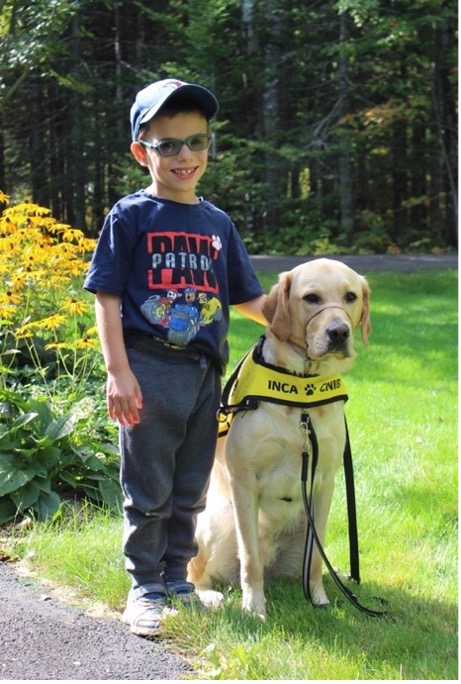By: Miriam Mas, Program Lead, Buddy Dog & Ambassador Dog Training and Team Admin, CNIB Guide Dogs
On occasion, some people may wonder why CNIB Buddy Dogs use a head halter such as a halti, or gentle leader, so we've compiled some FAQs.
What is a halti, a gentle leader? They are head halters used on dogs, similar to a horse using a halter, making it possible to handle a large, strong animal in a gentle way.
When dog head halters were first starting to be used by dog owners, they were often mistaken for a muzzle. Over the years, most people have become fairly familiar with these devices and their benefits.
In fact, these benefits are such that CNIB Guide Dogs even uses gentle leaders in its puppy raising program and guide dog training.

But, why do you use them with Buddy Dogs? Aren’t they supposed to be trained to walk gently on the leash anyways?
Good question. Indeed, they are trained to walk gently on leash, but it boils down to a combination of variables and ensuring maximum safety for both the handler and the dog.
A leash attached to the collar of a dog means it is attached to one of the strongest muscle areas in the dog’s body. However, a leash attached to the head drastically decreases the ability for the dog to pull.
Buddy Dogs can range in size between 60 and 80 lbs. Some of our Buddy Dog partners weigh that much or even less. For that reason, it is important for us to give them as much control as possible when handling their dog.
The following are important points to consider:
- Who is at the other end of the leash,
- Their size and strength,
- Their ability to anticipate potential upcoming distractions,
- Understanding that even the most well-behaved dog could suddenly become distracted, resulting in an unexpected pull for the young handler, potentially making them lose balance, fall, or lose the grip on the leash.
The focus here is to help ensure a positive experience for the child when walking their buddy dog and to maximize everybody’s safety.
Even though buddy dogs are walked with the double-leash system (main leash is controlled by the child, and a secondary leash is controlled by a parent/adult for safety), we want to empower the child by giving them as much control of their dog as possible. Over time, some buddy dogs may become more reliable and sensitive towards their young handler’s needs and may not need to use the head halter, but that will depend on each dog.